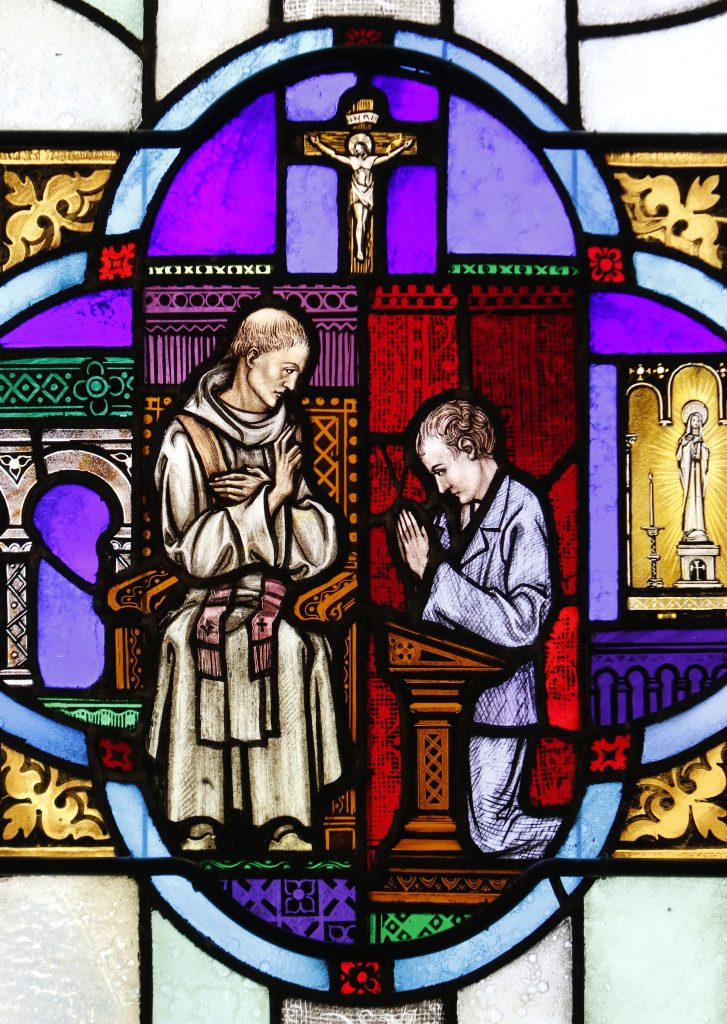The Church has observed the “seal of the confessional” — the privacy and secrecy between confessor and penitent — since the time of the Fathers.
The earliest Christian documents suggest that confession was a public event, at least for public sins. When sinners caused scandal, the damage was social, and so the Church prescribed a social remedy. A Christian who publicly renounced the faith, for instance, giving in to pressure or torture during persecution, bore responsibility for the bad example he had set.
Before he was restored to communion, he would demonstrate his repentance by admitting his fault and professing the faith before the congregation.
There are problems with public confession, of course. It was embarrassing, and many people would avoid it for that reason. In the early years of the third century, the African writer Tertullian acknowledged that some Christians “flee from this work as being an exposure of themselves, or they put it off from day to day.”
Public confession could also shine an unwelcome spotlight on a sinner’s victims. Think of the sin of adultery. Those who told this sin to the assembly might find themselves shaming not only themselves, but also, inadvertently, the people they had seduced, as well as the spouses they had betrayed.
And so private, secret confession seems to have been an option from the beginning. Origen, a third-century Scripture scholar in Egypt, mentions confession “to a priest,” and the practice is further discussed in the fourth- and fifth-century rules for monks.
Saint Aphrahat, the “Persian Sage,” insisted that confessors must honor every penitent’s trust and confidentiality. Addressing priests, he wrote: “And when [a sinner] has revealed [a sin] to you, do not make it public.”
Confessional secrecy appears also in the Irish penitential books of the seventh and eighth centuries.
The practice is listed, in the 12th century, among customs that have the force of law in the Church: “Let the priest who dares to make known the sins of his penitent be deposed.” This passage is the earliest known to carry a severe punishment for the priest who violates the confessional seal. Whoever breaks this trust should be exiled, the author goes on to say, and made to wander the earth in shame.
In the following century, the Fourth Lateran Council (1215) imposed the obligation of annual confession upon all the faithful. In doing so, the council also confirmed the priest’s obligation to secrecy:
“Let the priest absolutely beware that he does not by word or sign or by any manner whatever in any way betray the sinner. … For whoever shall dare to reveal a sin disclosed to him in the tribunal of penance we decree that he shall be not only deposed from the priestly office but that he shall also be sent into the confinement of a monastery to do perpetual penance.”
Those are not light penalties for priests who violate the seal. Why was it treated with such gravity?
Confessional secrecy is the hope and protection of sinners who want to reform. For that reason it has always been essential to the practice of the Catholic faith.
Mike Aquilina is a contributing editor to Angelus.
SPECIAL OFFER! 44 issues of Angelus for just $9.95! Get the finest in Catholic journalism with first-rate analysis of the events and trends shaping the Church and the world, plus practical advice from the world’s best spiritual writers on prayer and Catholic living, along with great features about Catholic life in Los Angeles. Subscribe now!

